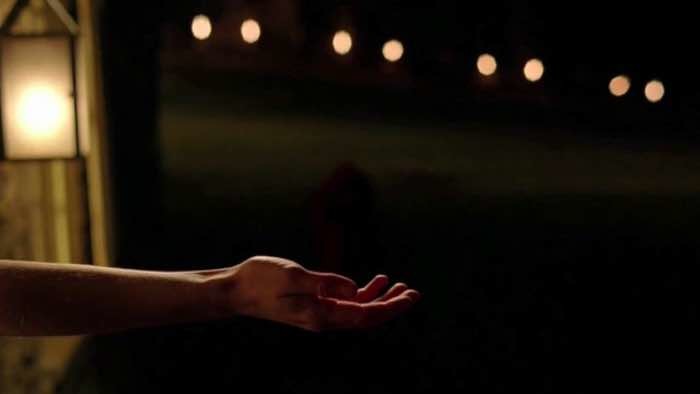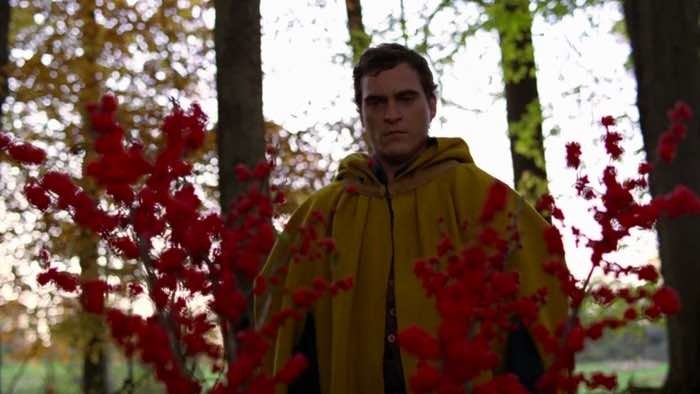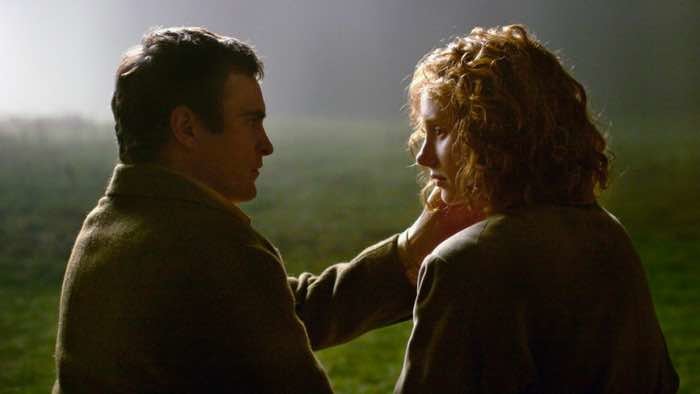The Unpopular Opinion: 13 Years Later, 'The Village' Stands As One Of M. Night Shyamalan's Best Movies
(Welcome to The Unpopular Opinion, a series where a writer goes to the defense of a much-maligned film or TV show, or sets their sights on something seemingly beloved by all. In this edition: a defense of M. Night Shyamalan unjustly maligned The Village.)"No one ever told me that grief felt so like fear." –C.S. Lewis, A Grief ObservedM. Night Shyamalan's career has been bumpy. He found monumental success with his 1999 ghost story The Sixth Sense, and continued to garner acclaim and stellar box office returns with its two follow-ups, Unbreakable and Signs. Yet after Signs, a rift began to form between Shyamalan's work and how the public perceived it. Eventually, the filmmaker fell almost completely out of favor, only managing to climb back on top slowly with recent films The Visit and Split. Nothing can quite capture the meteoric rise of Shyamalan's early career, though.While Lady in the Water might have been the film that torpedoed the last remaining shreds of good will towards Shyamalan's work, it was 2004's The Village (which came out 13 years ago yesterday) that started the dissent. More often than not, when people want to hold up examples of Shyamalan's lesser work, they tend to lump The Village in with misfires like The Happening.This is a mistake.The Village is one of Shyamalan's most interesting films, and perhaps one of his best. A melancholy meditation on grief and fear, it radiates sorrow in ways his other films do not. Yes, it does have that expected Shyamalan twist – two of them, in fact. But the film is more than its twists, and deserves to be watched with fresh eyes.
Those We Don't Speak Of
Marketing is likely to blame for much of the animosity towards The Village. Like most Shyamalan films before it, it was sold as something frightening – a spooky horror movie that would terrify audiences. Before its release, co-star Sigourney Weaver was even quoted as saying the script gave her nightmares for two weeks. While there are some chilling moments in the film, it becomes abundantly clear as you watch it that The Village is not a horror movie. It's a solemn reflection on grief, and also quite lovely in its reflections. Cinematographer Roger Deakins creates a visual style for the film inspired by the autumnal landscapes of Pennsylvania painter Andrew Wyeth, and James Newton Howard employs a mournful, haunting score enhanced by violinist Hilary Hahn. In the first few minutes of the film alone, it's blatantly clear that The Village is not your standard horror film. Yet fear is an essential element to its DNA.The characters in The Village are isolated, living closed off in a very secluded, very small Pennsylvania village sometime in the late 19th century. They seem mostly content in their simple lives, yet uneasiness blankets the air. They fear a group of unseens monsters, dubbed "Those We Don't Speak Of," who lurk in the woods that surround the village. The villagers and the monsters have a truce – you stay out of our place, we'll stay out of yours.The community of elders – led by William Hurt's Edward Walker – strives to keep harmony within the village, but the younger generation is prone to wanderlust. They go to the edge of the woods and wonder what's beyond. This younger generation is represented by the almost painfully quiet Lucius (Joaquin Phoenix) and the blind, carefree Ivy (Bryce Dallas Howard), the daughter of Edward Walker. These characters love each other, and Shyamalan builds their awkward but sweet romance in a natural, believable manner, with the shy Lucius becoming even shyer whenever he's around Ivy and the outgoing Ivy becoming even bolder. Phoenix is typically strong in the part, expertly conveying his quiet character's inner workings with body language and furtive glances, but it's Howard, as Ivy, who steals the show. The actress is phenomenal here, bringing to life a brave, remarkable young woman who seems fully realized. And one of the sneakier things Shyamalan does is not entirely clue the audience in to the fact that this is ultimately Ivy's story.
The early scenes of The Village seem to suggest Lucius is the main character – it's Lucius who wants to travel into the woods; it's Lucius who seems most inquisitive about the secrets of the village, including the mysterious boxes all the village founders – including his mother Alice (Sigourney Weaver) – have stashed away in their homes. Mysterious things start happening around the village: animals are found skinned, and Those We Don't Speak Of suddenly seem to be breaking the truce and venturing into the town more often than not. In a spellbinding scene, the monsters come storming in one night, sending everyone into a panic. One by one, villagers hide in their basements, yet Ivy waits at her door, knowing that Lucius will come for her. And he does, right as one of the monsters – blurry and in the distance – is about to close in. Lucius is being set up to be the strong, silent hero: Ivy's protector.And then he gets stabbed and spends the rest of the movie in a coma. Noah (Adrien Brody), an intellectually disabled member of the community who has a crush on Ivy, brutally stabs Lucius when he learns that he and Ivy are engaged. Lucius is near death, and there's nothing the village doctor can do for him. The only hope Lucius has relies on medicines from the towns beyond the woods – towns the villagers have shunned for their violent ways.After conferring with the town leaders, Edward agrees to send Ivy beyond the woods, into the towns to get medicine that will save Lucius. This in effect thrusts Ivy into the heroic role: after the film has set her up to seem like a helpless damsel in distress, she turns around and becomes the bravest, most heroic character in the film. Yet here is where some audiences began to turn on Shyamalan's film, because the fabled Shyamalan twist is about to present itself. And it's a doozy.
“You Can’t Trust Me At All”
Now it's time for a warning: here there be spoilers. Not content to rely on simply one twist, Shyamalan packs two into The Village. The first presents itself rather earlier – perhaps too early. Right before Ivy heads out on her mission to the towns, Edward tells her the truth: there are no monsters in the woods. "Those We Don't Speak Of" are a myth the village leaders made up to keep the villagers afraid of ever leaving. Edward says that at one point, long ago, there were rumors of monsters in the woods, and the elders used these rumors to their advantage, constructing elaborate monster costumes to enhance the illusion.The problem with revealing this twist early is that later, as Ivy wanders through the woods, a monster does show up. The film would like us to think that perhaps this is a real monster – the type that inspired the village elders to create their own fictional brand. Yet by revealing the twist prematurely, Shyamalan saps the film of some of its strength. Before we can get used to the "real" monster, it's revealed that the creature is really just Noah in disguise – although Ivy, being blind, never realizes this. When trying to attack Ivy, Noah falls into a pit and is killed. Ivy, for her part, thinks she has just vanquished a monster.Yet Shyamalan still has one more ace up his sleeve. When Ivy eventually scales the wall that separates the woods from the forbidden towns, there's a jarring moment when a very modern truck comes cruising down a modern, paved highway. We haven't jumped forward in time, though. Instead, it's revealed that the film is not actually set in the 19th century, but in fact present day. Edward and the village elders set up the village as a kind of social experiment: they had all lost loved ones to violence, and decided to regress into the past and live cut off from the real world.Again, Shyamalan uses Ivy's blindness to keep this reveal a secret from the character. She never learns that her entire community is a lie, and Shyamalan keeps the film under a blanket of uneasy bleakness by exploiting this to full effect. Ivy returns home with medicine, and while it's an emotional, powerful moment, the moment is undercut by the fact that the village will continue to perpetuate a lie. When Edward and the elders learn of Noah's death, they are faced with a choice: reveal to the younger villagers not in on the truth that everything they believe is a falsehood, or keep the lie alive. They unanimously decide to stick with the lie, exploiting Noah's death as a sacrifice and claiming it was Those We Don't Speak Of who killed the troubled young man.Some may had derided Shyamalan's multiple twists as predictable or even silly. In his one-star review, Roger Ebert called the film a "colossal miscalculation, a movie based on a premise that cannot support it, a premise so transparent it would be laughable were the movie not so deadly solemn." Yet perhaps there's more to it than that. Perhaps audiences just weren't ready for Shyamalan to rob them of the magic they had come to expect.Up until The Village, the twists in Shyamalan's films were in service of supernatural elements. They confirmed that there was some sort of otherworldly force working within the universe – something beyond our comprehension. The Village is the inverse of this, a film that blatantly says the supernatural is, in fact, a farce – that everything we thought we could believe in was a lie."You want to know the single biggest reason why this movie confused audiences?" Shyamalan later said. "Because my other movies gave people a reason to believe in the supernatural. In this one, the supernatural is not real. Now people don't know what they're going to get when they come see my movies. You expand your audience that way, you don't contract it. I'm saying, 'You can't trust me at all – you don't know where I'm going.' People come to me to believe in things, and this time I told them, 'The magic's not real."
The World Moves for Love
The Village was Shyamalan's first post-9/11 film, and as such can be viewed as a fable for a post-9/11 world steeped in fear and confusion. Most of the characters in the film live in a perpetual state of fear – a fear they've come to accept but that's always lurking. In one early scene, Shyamalan portrays two nameless female characters playfully sweeping the dust from their porch. The girls twirl with their brooms, laughing and teasing each other during their dull chores. But then one of them stops, terrified. She's spotted a patch of red flowers growing out of the brown earth, and red is thought of as a "forbidden color" that attracts Those We Don't Speak Of. One can't help but think of the color-coded "threat levels" the Bush administration put in place following 9/11 – red, after all, was the highest, indicating severe risk.There's a bleakness to this realization, and to the film's coda that suggests the villagers will continue to knowingly live a lie and maintain that fear. And perhaps the bleakest realization is that now, 13 years after the film was released, this message is still relevant, as our current American leaders exploit the "fear of the other" for their own nefarious, hateful gains. For his part, Shyamalan strives to show that the people perpetuating the lie of the village aren't acting out of hate, but grief."No one ever told me that grief felt so like fear," C.S. Lewis wrote in A Grief Observed, a book that was a reflection on the death of his wife. "I am not afraid, but the sensation is like being afraid. The same fluttering in the stomach, the same restlessness, the yawning. I keep on swallowing. At other times it feels like being mildly drunk, or concussed. There is a sort of invisible blanket between the world and me." The founders of the village have all lost family members to violence, and it is a violent act – the stabbing of Lucius – that inspires Edward to throw off tradition and reveal part of the lie to Ivy.There's a disillusionment to The Village, and indeed to almost all of Shyamalan's post-Village work. His early films had an air of hope to them – the ability of The Sixth Sense's Cole to heal troubled spirits; Unbreakable's David Dunne learning he's a superhero who can save the unfortunate; former reverend Graham Hess finding his faith in the face of terrifying events in Signs. From The Village onward, that hope is gone, replaced with a sourness giving way to downright nastiness – even his unintentionally hilarious The Happening is almost unrelentingly nasty and cruel. It's almost as if there was a sea change in the filmmaker's creative output – perhaps his diminishing box office returns and the events of the world soured him.But there is hope within The Village. "We can move towards hope," one character says when learning of Ivy's quest. "We cannot run from heartache...Heartache is a part of life, we know that now. Ivy is running toward hope, let her run." This is followed by the most powerful piece of dialogue in the film: When one character asks Edward how he could send his blind daughter on such a potentially dangerous quest, he calmly replies: "She is more capable than most in this village. And she is led by love. The world moves for love. It kneels before it in awe."What a beautiful sentiment that is, even if I'm not sure if it's true anymore. Perhaps it's not; perhaps it's a lie. And perhaps it's more comforting to embrace that lie. The Village is Shyamalan's most challenging film – a film from a man who usually embraces magic and the supernatural telling the audience that they're on their own. It's easy to see why this turned off some, but now it's time to give it another chance. It is a beautiful, melancholy film that dares to end on a note that's simultaneously negative and hopeful; an ending not easily shrugged off or pushed aside. This is particularly unsafe ground for a filmmaker like Shyamalan to tread on, but he did so proudly. The Village deserves a reappraisal.
